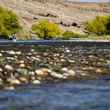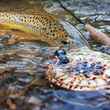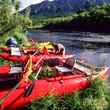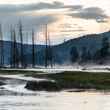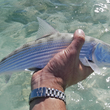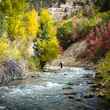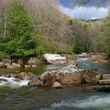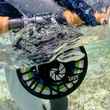The Vapen Red is a fly rod I didn't want to like. I'm just being honest. While I'm most certainly gear addicted, and particularly giddy about the next new thing, there was something that rubbed me wrong about the Vapen as soon as Redington introduced it. The Vapen introduces two entirely new technologies into the world of fly rods, with its X-Wrap blank construction and -- of course -- the bright red polymer handle that Redington co-developed with golf club grip manufacturer Winn Grips. For some reason, the combination of the two made the Vapen Red feel gimmicky rather than innovative, so I was prepared to be disappointed when the rod landed on the front steps.
While I consider myself quite adept at quickly judging the character of people, never let it be said that I am adept at doing so with fly rods. I've been fishing the Vapen Red for many months now, on everything from small Pennsylvania spring creeks to big Alaskan rivers, and in that time it has become one of my favorite rods currently in my quiver. That's not to say the Vapen Red is right for everything, but it is a very versatile rod that impresses in many arenas. And, despite my holding out as long as I could, I've even come around on the grip.



